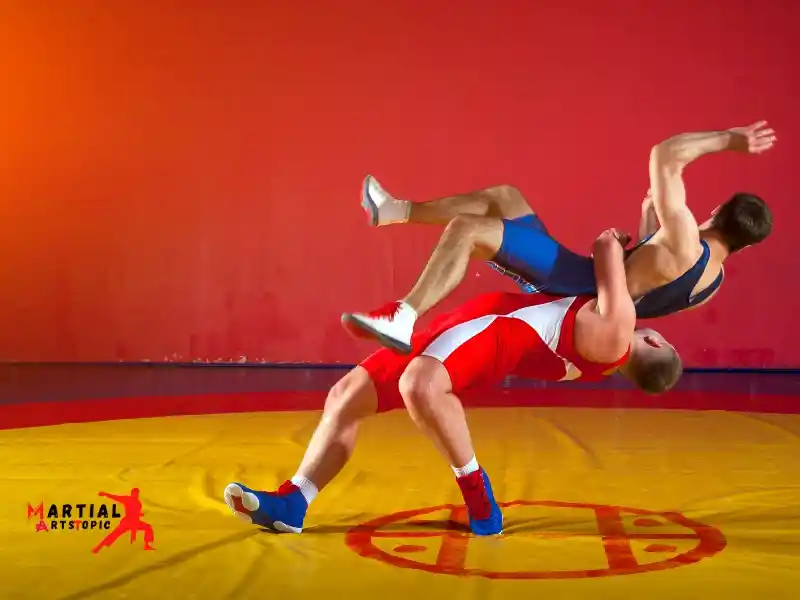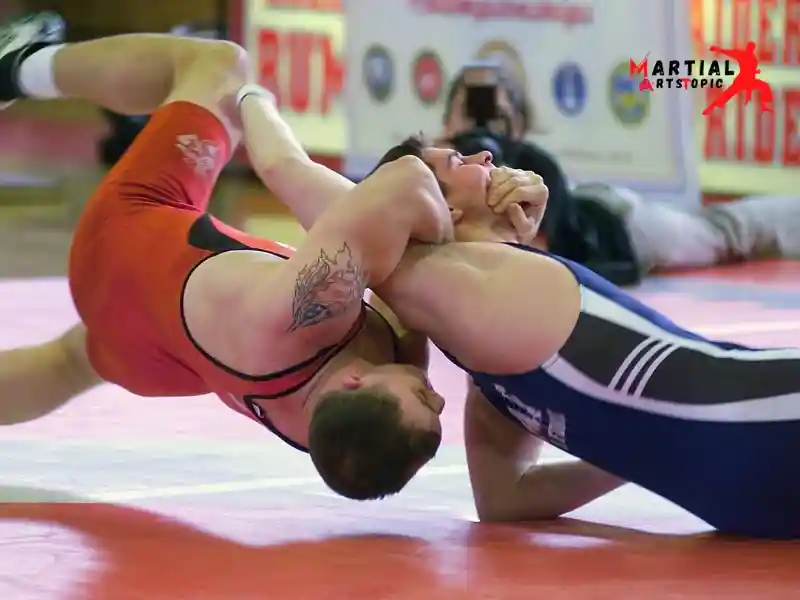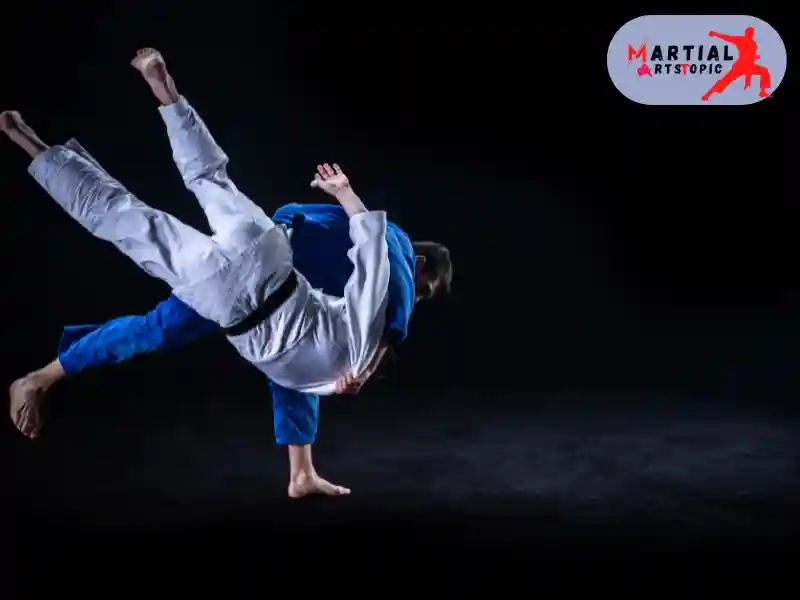
Unveiling the Power of Sambo Fighting: The Art of Combat
Unveiling the power of Sambo fighting, also known as the art of combat, is an exhilarating journey into the world of martial arts. Sambo fighting techniques encompass a dynamic blend of throws, ground fighting, and striking, making it a formidable and versatile martial art. Whether you’re a seasoned practitioner or a curious beginner, delving into the intricacies of Sambo fighting can be both enlightening and empowering. Embracing the principles of balance, leverage, and agility, Sambo offers a holistic approach to self-defense and physical conditioning. Join us as we explore the profound techniques and philosophies that define the art of Sambo fighting, and unlock its transformative potential.
History of Sambo Fighting
The Soviet Red Army developed sambo, which stands for “self-defense without weapons” in Russian, in the early 1920s. It was created as a hand-to-hand combat system for the military, incorporating the most effective techniques from various martial arts. Over the years, sambo developed into a competitive sport, with both sport sambo and combat sambo gaining recognition worldwide.
The Techniques of Sambo Fighting
Sambo fighting emphasizes throws, takedowns, and ground fighting, making it a formidable martial art in both self-defense and competition. Its practitioners, known as “samboists,” are trained to leverage their opponent’s momentum and strength, using techniques such as leg sweeps, hip throws, and joint locks to gain the upper hand. The combination of judo and wrestling techniques gives sambo a unique edge, allowing practitioners to adapt to various combat scenarios.
The Mindset of a Samboist
Besides physical techniques, sambo fighting instills a mindset of adaptability and resilience in its practitioners. Samboists are trained to remain calm under pressure, think strategically, and capitalize on their opponent’s weaknesses. This mental fortitude is essential in the heat of combat, enabling sambo fighters to overcome challenges and emerge victorious.
Unveiling the Power of Sambo Fighting
Whether you are a seasoned martial artist or a beginner looking to explore a new combat discipline, sambo fighting offers a wealth of benefits. Its emphasis on practical self-defense, physical fitness, and mental discipline makes it a well-rounded martial art for individuals of all ages and skill levels. By unlocking the power of sambo fighting, practitioners can enhance their overall well-being and develop valuable self-defense skills.
What is Combat Sambo?

What is Combat Sambo? Combat Sambo is a dynamic martial art that blends elements of grappling, striking, and self-defense techniques. It is a versatile combat system that equips practitioners with the skills necessary for real-world self-defense and competitive fighting. Sambo fighting emphasizes practicality and adaptability, making it a valuable discipline for individuals looking to enhance their combat capabilities. With its roots in Russia, Combat Sambo has gained global recognition for its comprehensive approach to combat training. Whether you’re seeking to improve your self-defense skills or engage in competitive fighting, Combat Sambo offers a holistic training experience that hones both physical and mental prowess.
Understanding the Basics of Sambo
Sambo fighting is a dynamic martial art that originated in Russia, emphasizing a combination of throws, grappling, and striking techniques. It is a versatile and effective combat system that has gained popularity worldwide. The basics of sambo fighting include mastering fundamental throws, learning effective ground control, and developing striking skills. Sambo fighters also focus on honing their balance, agility, and flexibility to execute techniques with precision and power. This martial art offers a comprehensive approach to self-defense and combat sports, making it a valuable discipline for practitioners of all levels. Whether you’re a beginner or an experienced martial artist, exploring the basics of sambo fighting can enhance your overall skills and knowledge in martial arts.
Stance and Footwork
The foundation of any successful Sambo fighter lies in their stance and footwork. A balanced and mobile stance allows for quick movements and effective defense. When engaging in Sambo, it’s crucial to maintain a low center of gravity, keeping your weight evenly distributed to facilitate swift transitions between offensive and defensive maneuvers. Furthermore, mastering the art of footwork enables Sambo practitioners to maneuver strategically, creating opportunities to execute throws, takedowns, and transitions to groundwork.
Grips and Control
In Sambo fighting, grips and control play a pivotal role in dictating the flow of the match. Understanding how to establish and maintain advantageous grips on your opponent can significantly influence your ability to execute techniques and thwart your opponent’s advances. Whether it’s utilizing sleeve grips, lapel grips, or obtaining a dominant grip on your opponent’s body, mastering the art of grip control is essential for any Sambo practitioner.
Throws and Takedowns
The explosive and dynamic nature of Sambo is exemplified through its diverse array of throws and takedowns. From hip throws to leg sweeps, Sambo offers a rich tapestry of techniques designed to off-balance and immobilize opponents with precision and force. By honing your proficiency in executing throws and takedowns, you can gain a strategic advantage in the heat of combat, setting the stage for a dominant position or a seamless transition to groundwork.
Groundwork and Submissions
Sambo’s emphasis on groundwork and submissions underscores its comprehensive approach to combat. Once the action transitions to the ground, Sambo practitioners use their experience in grappling and submission techniques to gain the upper hand. Whether it’s executing joint locks, chokes, or leveraging positional control, a nuanced understanding of groundwork and submissions is essential for achieving victory in Sambo competitions.
Essential Techniques in Sambo Fighting

Sambo fighting is a dynamic martial art that combines elements of judo, wrestling, and self-defense techniques. In essential techniques in sambo fighting, mastering throws, takedowns, and ground control is crucial. The art of sambo emphasizes the importance of leverage, balance, and quick transitions between standing and ground positions. Additionally, understanding joint locks and submission holds is essential for gaining the upper hand in sambo fighting. By honing these fundamental techniques, practitioners can elevate their proficiency in sambo and enhance their overall combat skills.
- Throws and Takedowns: Sambo is renowned for its impressive array of throws and takedowns. From the explosive hip throw (o-goshi) to the swift foot sweep (deashi harai), these techniques require precise timing and seamless execution. The ability to off-balance an opponent and capitalize on their momentum is a hallmark of Sambo Fighting.
- Joint Locks and Submission Holds: A key aspect of Sambo Fighting is its emphasis on joint locks and submission holds. Practitioners learn to leverage their opponent’s limbs, applying pressure to control and immobilize them. From the shoulder lock (ude-garami) to the kneebar (knee lock), these techniques demand a deep understanding of anatomy and leverage.
- Groundwork and Defense: Sambo places a strong emphasis on groundwork, teaching practitioners how to maneuver and grapple effectively on the mat. Techniques such as the guard pass and the mount escape are essential for maintaining control and neutralizing an opponent’s offense.
- Strikes and Defense: While Sambo is primarily known for its grappling techniques, it also incorporates striking techniques for self-defense and combat situations. Practitioners learn to deliver powerful punches, kicks, and elbow strikes, as well as how to defend against incoming strikes with footwork and evasive maneuvers.
- Grips and Control: Grip fighting is a crucial component of Sambo Fighting, as practitioners must learn to establish and maintain control over their opponent. Techniques such as the two-on-one grip and the Russian tie are essential for setting up throws, takedowns, and submission holds.
Training and Conditioning for Sambo
Sambo fighting requires a high level of physical conditioning and specialized training to excel in this dynamic martial art. Conditioning for sambo involves a combination of strength, flexibility, endurance, and agility training. Incorporating exercises such as kettlebell swings, bodyweight exercises, and interval training can help improve overall fitness and performance in sambo fighting. Additionally, focusing on specific grappling techniques, takedowns, and ground control drills is essential to enhance proficiency in sambo. It is crucial to tailor training programs to mimic the intensity and demands of sambo fights to ensure fighters are well-prepared for competitions and real-life combat situations.
Training Tips for Sambo Fighting
- Focus on Functional Strength: Sambo requires functional strength that translates into real-life movements. Incorporate exercises like kettlebell swings, medicine ball throws, and bodyweight exercises such as squats, lunges, and push-ups to develop strength and power.
- Work on Flexibility: Flexibility is crucial for executing Sambo techniques effectively. Include stretching exercises and yoga poses in your training routine to enhance flexibility and prevent injuries.
- Practice Groundwork: Ground fighting is a fundamental aspect of Sambo. Dedicate time to drills and sparring sessions focused on groundwork to improve your grappling, submission, and control techniques.
- Develop Explosive Power: Sambo fighters need explosive power for takedowns and throws. Plyometric exercises like box jumps, explosive push-ups, and medicine ball slams can help improve your explosive strength.
- Cardiovascular Conditioning: Sambo matches can be intense and physically demanding. Incorporate high-intensity interval training (HIIT) and endurance exercises such as running, cycling, or swimming to improve your cardiovascular fitness.
Conditioning Techniques for Sambo
- Grip Strength Training: Grip strength is essential for controlling your opponent in Sambo. Utilize grip strengtheners, towel pull-ups, and farmer’s walks to develop a firm grip.
- Neck and Core Strength: Strengthening your neck and core muscles is crucial for withstanding impact and maintaining stability during throws and submissions. Include exercises like planks, neck bridges, and resistance band exercises to build a strong core and neck.
- Technique Drills: Repetition of Sambo techniques is key to improving proficiency. Dedicate time to drilling takedowns, throws, joint locks, and escapes to refine your skills and muscle memory.
- Mental Training: Sambo requires mental fortitude and strategy. Practice visualization, meditation, and relaxation techniques to improve focus, composure, and mental resilience during training and competition.
- Recovery and Rest: Adequate rest and recovery are vital for preventing injuries and maximizing performance. Incorporate rest days into your training schedule and prioritize sleep, hydration, and nutrition for optimal recovery.
Strategies and Tactics in Sambo Competitions

Sambo fighting competitions require a strategic approach to succeed. Effective tactics in sambo involve a combination of striking, grappling, and ground fighting techniques. One key strategy is to maintain distance and control the pace of the match, waiting for the opportune moment to capitalize on the opponent’s weaknesses. Utilizing throws, joint locks, and submission holds can be essential in gaining the upper hand. It’s also crucial to adapt to the opponent’s style and anticipate their moves, allowing for quick counters and effective defense. By mastering these strategies and tactics, sambo fighters can greatly improve their chances of victory in competitions.
- Utilize Effective Grip Fighting: Grip fighting is a crucial aspect of sambo competitions. Developing a strong and strategic grip can give you the upper hand in controlling your opponent’s movements and setting up your own attacks. Focus on establishing a dominant grip while actively disrupting your opponent’s attempts to do the same.
- Primary Throws and Takedowns: Sambo places a strong emphasis on throws and takedowns, making it essential for competitors to master a variety of techniques in this area. Work on executing throws with precision and fluidity, and be prepared to seamlessly transition between different takedown options based on your opponent’s movements.
- Embrace Groundwork Proficiency: Solid groundwork skills are invaluable in sambo competitions. From executing effective pins and submissions to swiftly transitioning between different positions, honing your groundwork proficiency can greatly influence the outcome of a match.
- Strategic Movement and Footwork: Mobility and footwork play a pivotal role in sambo fighting. Understanding how to move strategically within the competition area, as well as how to capitalize on your opponent’s movements, can be a significant change.
- Maintain Versatility in Strikes and Kicks: While sambo is renowned for its grappling techniques, incorporating effective striking and kicking maneuvers can catch your opponent off guard and diversify your offensive arsenal.
- Develop Mental Toughness and Resilience: Sambo competitions can be physically and mentally demanding. Cultivating mental toughness, resilience, and the ability to adapt to changing circumstances is essential for enduring the rigors of competition.
- Strategic Defense and Counterattacks: Being proficient in defensive tactics and counterattacks is crucial in sambo. Anticipating your opponent’s moves and having a repertoire of effective defensive techniques can thwart their advances and create opportunities for your own offensive maneuvers.
Sambo Fighting Gear and Equipment
Sambo Fighting Gear and Equipment in Sambo fighting, having the right gear and equipment is essential for both safety and performance. The key essentials for Sambo fighting include a durable uniform known as a kurtka, which is designed to withstand the rigors of training and competition. Additionally, a pair of reliable grappling shorts and a mouth guard are crucial for protection during intense bouts. For training, high-quality wrestling shoes provide the necessary grip and support for various techniques. Other optional but beneficial gear includes knee pads for added protection during groundwork and sparring, as well as hand wraps for wrist support. By investing in the proper Sambo fighting gear and equipment, practitioners can enhance their overall experience and optimize their performance in the sport.
- Sambo Uniform (Kurtka and Shorts): The traditional Sambo uniform consists of a Kurtka (jacket) and shorts. The Kurtka is a durable jacket designed to withstand the rigors of gripping and throwing techniques, while the shorts provide freedom of movement essential for executing dynamic techniques.
- Sambo Shoes: Specially designed Sambo shoes offer excellent traction and support, enabling practitioners to move swiftly and maintain stability during training and competition. These shoes are engineered to enhance grip on the mat while providing comfort and protection for the feet.
- Protective Gear: Safety is paramount in any martial art, and Sambo is no exception. Headgear, mouth guards, and groin protectors are essential for safeguarding against potential injuries during intense training sessions and competitions.
- Hand Wraps and Gloves: Hand wraps offer wrist support and protection during striking and grappling, while gloves are crucial for sparring and striking drills. These items are indispensable for maintaining hand and wrist health while engaging in various aspects of Sambo training.
- Training Mats: Quality training mats are crucial for providing a safe and supportive surface for practicing throws, takedowns, and ground techniques. Proper mats also reduce the risk of affected-related injuries, making them an essential investment for any Sambo training facility.
- Grappling Dummy: A grappling dummy can be an invaluable training partner, allowing practitioners to refine their techniques, submissions, and ground control outside of regular training hours. This versatile tool facilitates solo drilling and helps improve overall grappling proficiency.
- Hydration and Nutrition: While not traditional gear, proper hydration and nutrition are vital for maintaining peak performance and recovery. Water bottles, electrolyte supplements, and nutritious snacks should be readily available to support the physical demands of Sambo training.
Benefits of Practicing Sambo

Sambo fighting offers a wide range of physical and mental benefits for practitioners. This dynamic martial art provides an effective full-body workout, improving strength, flexibility, and cardiovascular endurance. Additionally, the technical and strategic aspects of sambo promote mental sharpness, focus, and discipline. Practicing sambo can also enhance self-defense skills and confidence, making it a valuable martial art for individuals of all ages. Whether you’re looking to improve your fitness, learn self-defense, or simply challenge yourself in a new way, sambo fighting has something to offer for everyone.
- Physical Fitness: Sambo training provides a full-body workout, enhancing strength, flexibility, endurance, and cardiovascular health. The diverse techniques and drills involved in Sambo help participants develop a well-rounded level of physical fitness.
- Self-Defense Skills: One of the primary goals of Sambo is to equip practitioners with effective self-defense techniques. Through learning throws, takedowns, joint locks, and ground fighting maneuvers, individuals can gain the confidence and ability to protect themselves in real-life situations.
- Mental Toughness: Sambo requires focus, discipline, and mental fortitude. Practitioners learn to stay calm under pressure, strategize effectively, and overcome challenges both on and off the mat. These mental attributes cultivated in Sambo can positively affect various aspects of life.
- Stress Relief: Engaging in Sambo training can serve as a fantastic stress reliever. The physical exertion, mental focus, and camaraderie experienced during training sessions can help individuals alleviate stress and unwind from the demands of everyday life.
- Improved Coordination and Balance: The complex movements and techniques in Sambo contribute to enhanced coordination, balance, and body awareness. Practitioners develop a heightened sense of proprioception, which can be beneficial for various other physical activities and sports.
- Competitive Spirit: For those who enjoy competition, Sambo offers the opportunity to participate in local, national, and international tournaments. The thrill of testing one’s skills in a controlled, competitive environment can be incredibly rewarding and motivating.
- Community and Camaraderie: Sambo fosters a sense of community and camaraderie among practitioners. Training with like-minded individuals and building strong relationships within the Sambo community can be immensely fulfilling.
Conclusion
Sambo fighting is a dynamic martial art that incorporates a combination of grappling, striking, and self-defense techniques. It emphasizes both physical prowess and mental discipline, making it a well-rounded form of combat sports. Sambo’s roots in Russia and its evolution into an international sport showcase its widespread appeal and practicality in various contexts. Whether you’re interested in self-defense, competition, or overall fitness, sambo offers a challenging and rewarding path for practitioners of all levels. Embracing its principles can enhance not only your physical abilities but also your self-confidence and mental resilience.
